Are you struggling to keep up on the tennis court? Do you find yourself getting tired too quickly or unable to reach those tough shots? You’re not alone. Many tennis players face the challenge of not being in peak physical condition, which can seriously impact their game.
Imagine how frustrating it feels when you’re out of breath after just a few rallies, or when you can’t generate enough power in your shots. Your opponents seem to move faster, hit harder, and last longer than you do. It’s disheartening to know that your fitness level is holding you back from reaching your full potential on the court.
But don’t worry, there’s a solution. “The Ultimate Guide to Physical Conditioning for Tennis” is here to help. This comprehensive guide will show you how to transform your fitness and take your tennis game to the next level. From building strength and improving cardiovascular endurance to enhancing flexibility and mastering court movement, we’ll cover everything you need to know.
Get ready to leave your opponents in awe as you dominate the court with newfound energy, power, and agility. It’s time to unlock your true tennis potential and achieve peak performance124.
Table of Contents
The Importance of Fitness in Tennis
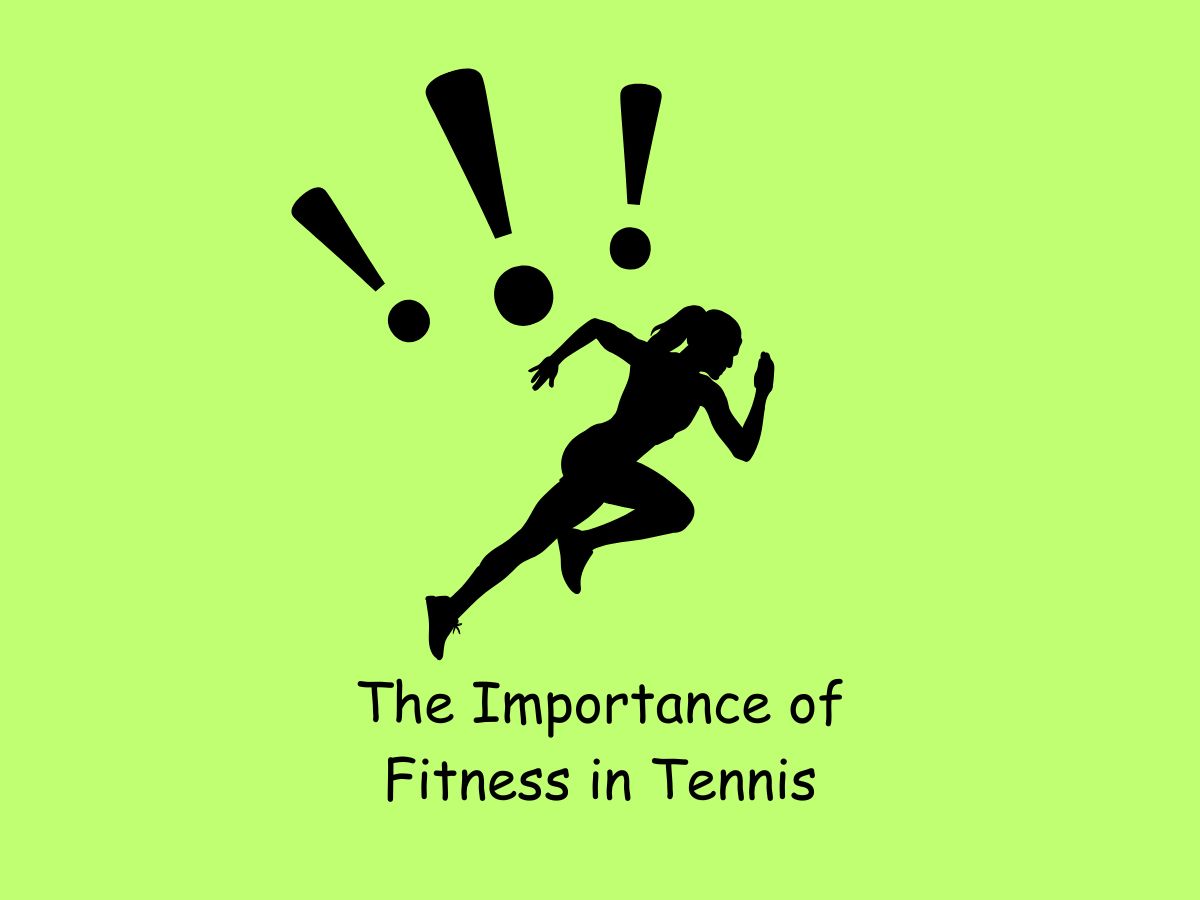
Tennis is more than just hitting a ball over a net. It’s a demanding sport that requires a high level of fitness. Good fitness allows players to maintain their focus throughout a match and gives them a mental edge1. When you’re fit, you can keep up your energy and make smart decisions, even in long games. Fitness also helps prevent injuries. If you’re not in good shape, you’re more likely to get hurt from overuse or tiredness1.
Being fit for tennis means having speed, agility, and endurance. The world’s top tennis players excel in all three areas1. You also need anaerobic fitness, which is the ability to sprint in short bursts. Power and flexibility are crucial too. Without these, you’ll struggle to compete and enjoy the game1. Remember, even if you have great technique, it won’t hold up if you’re too tired to use it properly.
Fitness in tennis isn’t just about physical strength. It also affects your mental game. When you’re in good shape, you can stay focused for longer periods. This can give you an advantage over opponents who might tire out faster1. Plus, being fit helps you recover quickly between points and matches. This is especially important during tournaments when you might play several days in a row.
Building Strength for Power and Stability
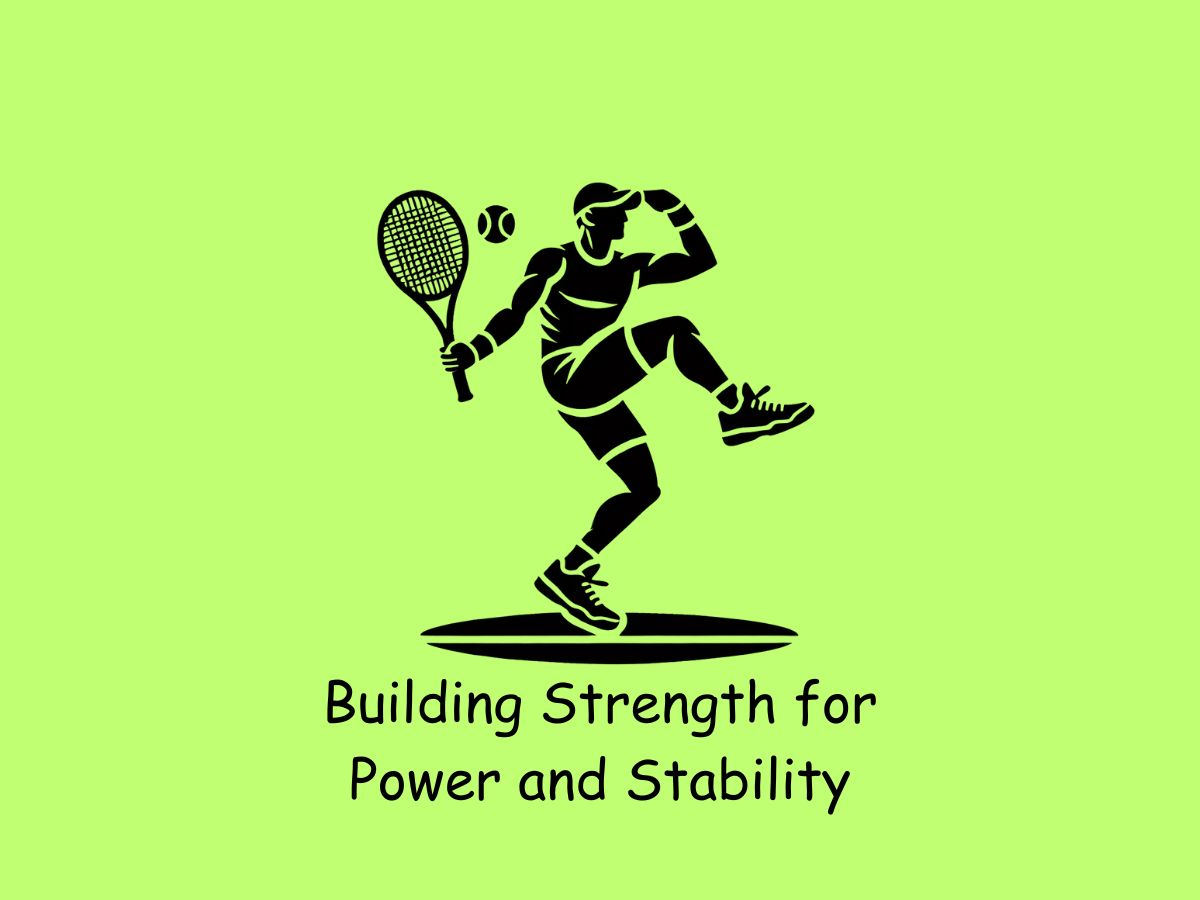
Strength training is a game-changer for tennis players. It helps develop the power and explosiveness needed for forceful serves and quick court coverage2. By focusing on exercises that target the legs, core, and upper body, players can maximize their strength and explosive power. This leads to more powerful shots and faster movement around the court.
But strength training isn’t just about hitting harder. It also improves stability and reduces the risk of injuries2. Tennis puts a lot of strain on specific muscle groups. By strengthening all muscle groups, including those less used in tennis, players can achieve better overall conditioning. This balanced approach helps prevent common tennis injuries and keeps players on the court longer.
Incorporating strength training into a tennis workout routine is crucial for success. It’s not just about building muscle; it’s about creating a strong foundation for all aspects of the game5. Strength exercises like squats, push-ups, and resistance band rotations mimic the physical demands of tennis. They enhance agility, endurance, and shot accuracy. By combining strength training with on-court practice, players can see significant improvements in their performance and longevity in the sport.
Cardiovascular Conditioning: Endurance for Long Matches
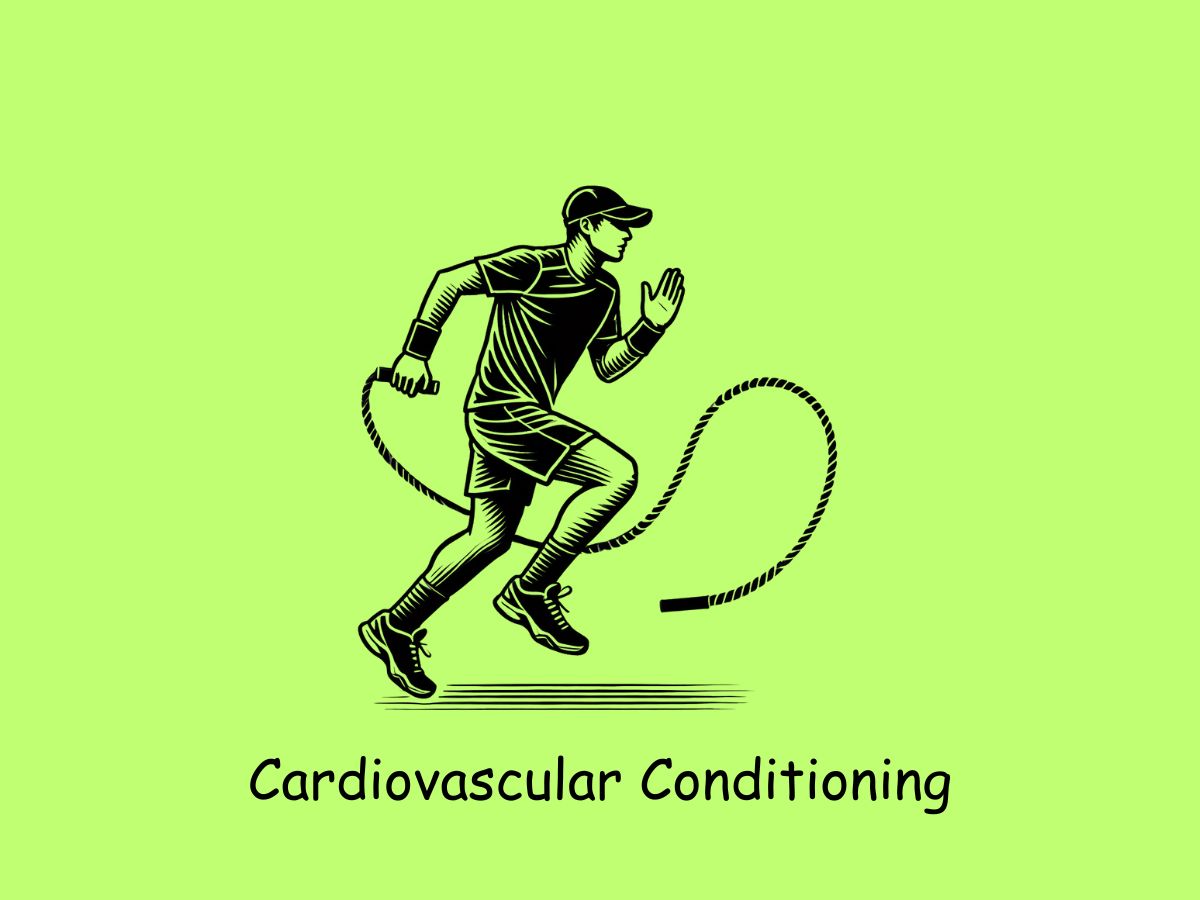
Cardiovascular conditioning is essential for tennis players who want to last through long matches. It’s all about building stamina and strengthening your heart. This way, you can keep going even after intense rallies3. Good cardio fitness helps you recover quickly between points, ensuring you’re ready for the next shot.
One effective way to improve your cardiovascular fitness is through running and sprinting intervals. Start with a light jog to warm up, then add sprint intervals. For example, sprint for 30 seconds, then walk for 90 seconds. Repeat this for 10-15 minutes3. Over time, you can increase the sprint duration. This type of training mimics the stop-start nature of tennis, preparing your body for real match conditions.
Heart rate is a good indicator of how hard your body is working during a match. For trained players aged 20-30, heart rates typically range from 140-160 beats per minute during singles matches6. During long and fast rallies, it can rise to 190-200 beats per minute. By improving your cardiovascular fitness, you can better handle these intense periods of play. Remember, matches can be won or lost during these crucial high-intensity moments, so being in top cardio shape can give you a significant advantage on the court.
Flexibility and Mobility: Reaching Every Shot
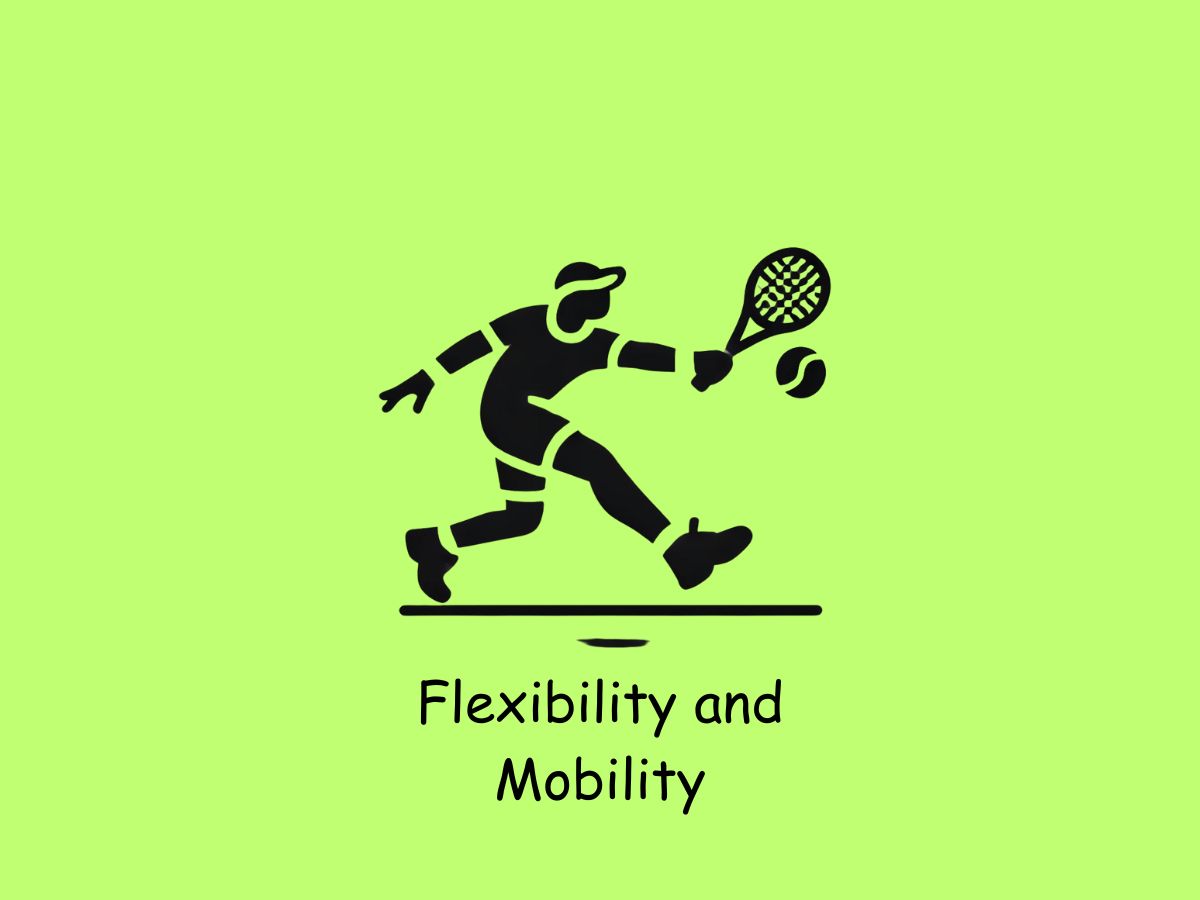
Flexibility and mobility are crucial for tennis players. They help you move freely and comfortably on the court, allowing you to reach and stretch for shots with ease. Good flexibility lets you change direction quickly and smoothly, giving you an edge over your opponents1.
One of the biggest benefits of being flexible is that it reduces your risk of injury. Tennis involves a lot of twisting, turning, and reaching. If your muscles are tight and your range of motion is limited, you’re more likely to get strains and sprains. By improving your flexibility, you can stay on the court and avoid unnecessary injuries1.
Flexibility also improves your performance. When you can move more freely, you can reach shots that were once out of your grasp. This leads to better accuracy and more powerful shots. Plus, when you’re not held back by tight muscles, you can focus more on your technique and strategy. This boost in mental toughness can help you play with more confidence and consistency throughout your matches1.
Speed and Agility: Mastering Court Movement
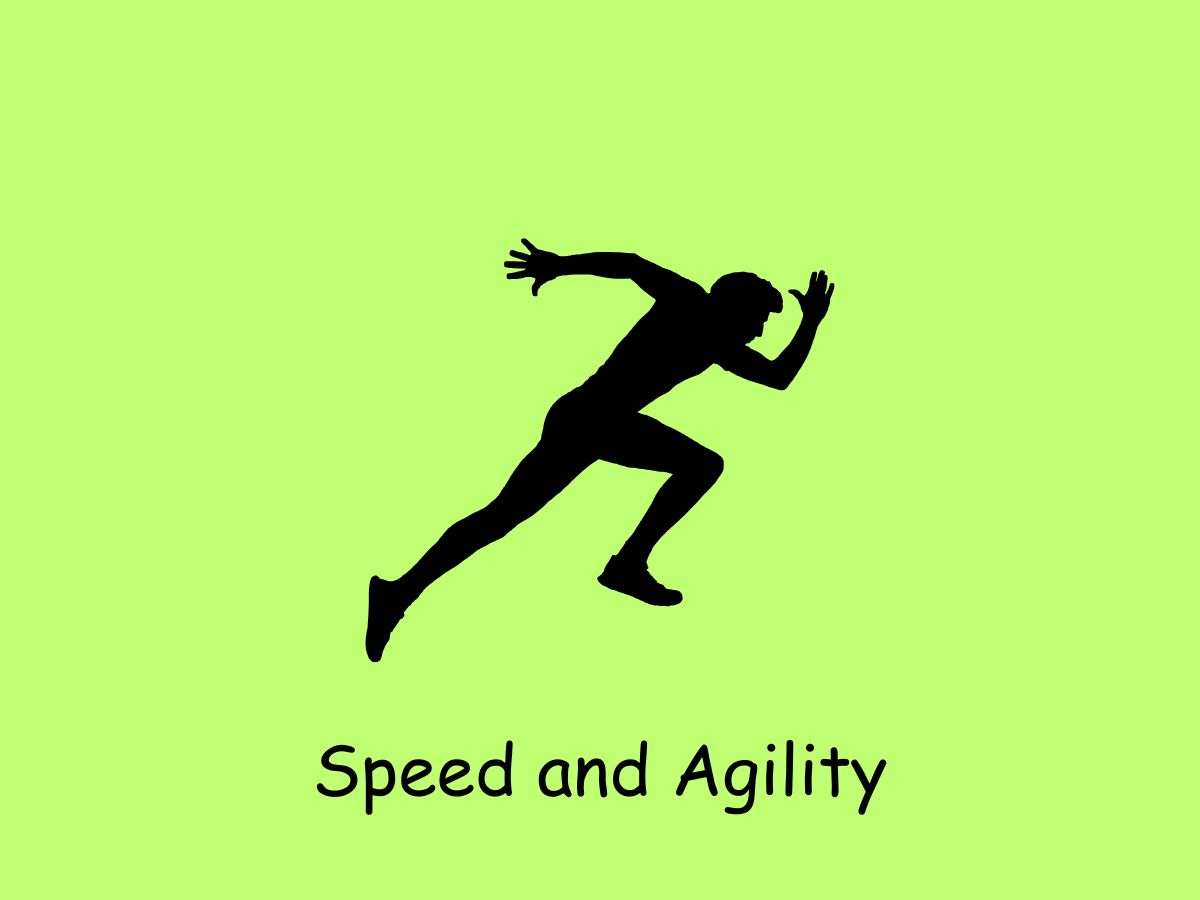
Speed and agility are like two sides of the same coin in tennis. Speed helps you get to shots faster, while agility lets you change direction quickly during rallies. Together, they give you a big advantage on the court, helping you outmaneuver your opponents4.
To improve your speed and agility, you need to do more than just run fast. You should focus on explosive movements, agility drills, and exercises that improve your reaction time. These skills will help you reach difficult shots and move more efficiently during matches. It’s not just about being fast; it’s about moving smarter on the court4.
Developing speed and agility isn’t just about physical skills. It also sharpens your mental game and decision-making under pressure. When you can move quickly and change direction easily, you have more time to think about your next move. This can make a big difference in competitive matches. By working on your speed and agility, you’re setting yourself up for success on the tennis court4.
Core Strength: The Foundation of Tennis Performance
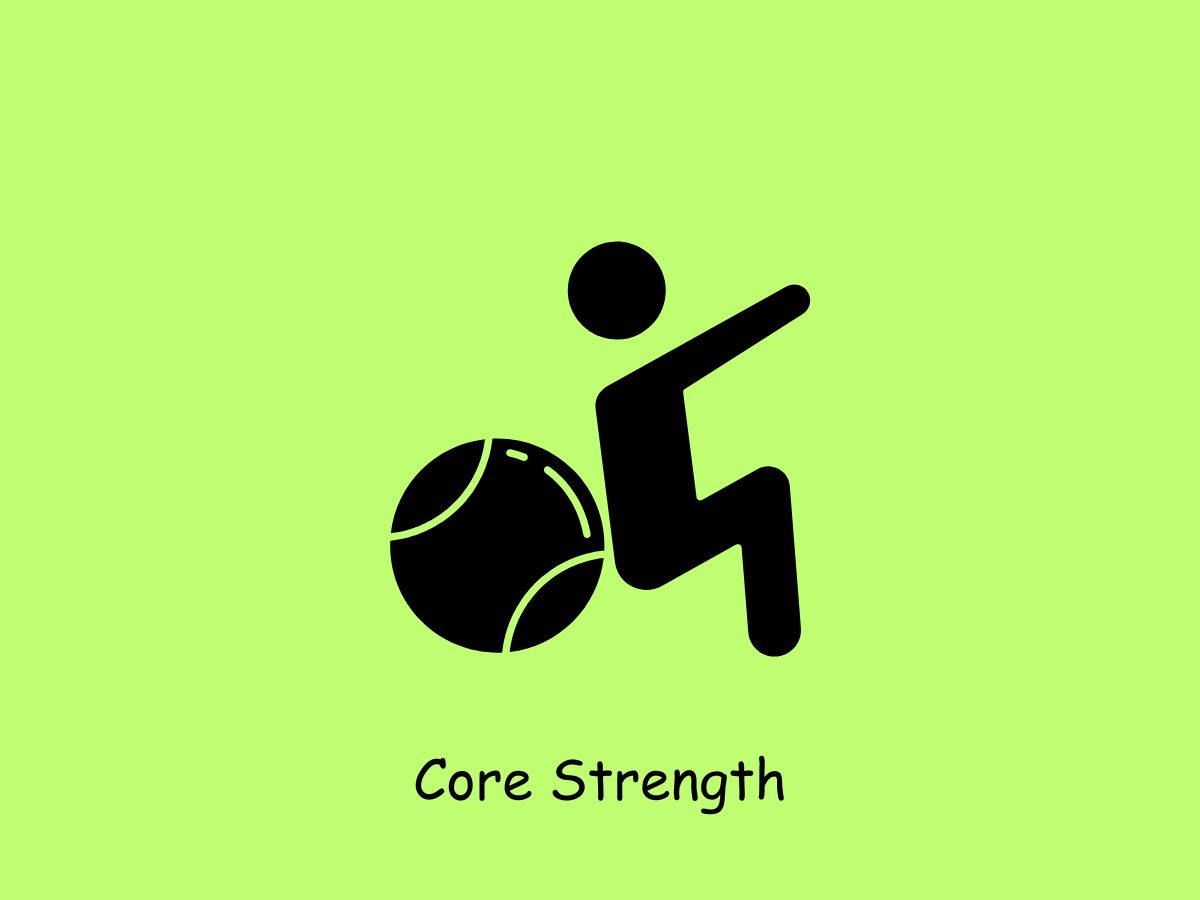
Core strength is the backbone of a tennis player’s performance. Your core muscles, which include your abs, obliques, and lower back, are involved in almost every move you make on the court. From powerful serves to quick side-to-side movements, a strong core is essential for playing your best tennis2.
Having a strong core helps you in many ways. It allows you to transfer more energy from your lower body to your upper body, resulting in more powerful and precise shots. A strong core also helps you maintain better balance and stability, which is crucial when you’re moving quickly around the court. Plus, it can help prevent injuries by providing support for your spine and other joints6.
To strengthen your core, you can do exercises like planks, Russian twists, and medicine ball rotations. These exercises target key areas like your abs, obliques, lower back, and hips. All of these muscles are important for generating power in your shots and keeping your balance during fast-paced rallies. By making core exercises a regular part of your training, you can improve your overall performance and reduce your risk of getting hurt on the court26.
Recovery and Injury Prevention Techniques
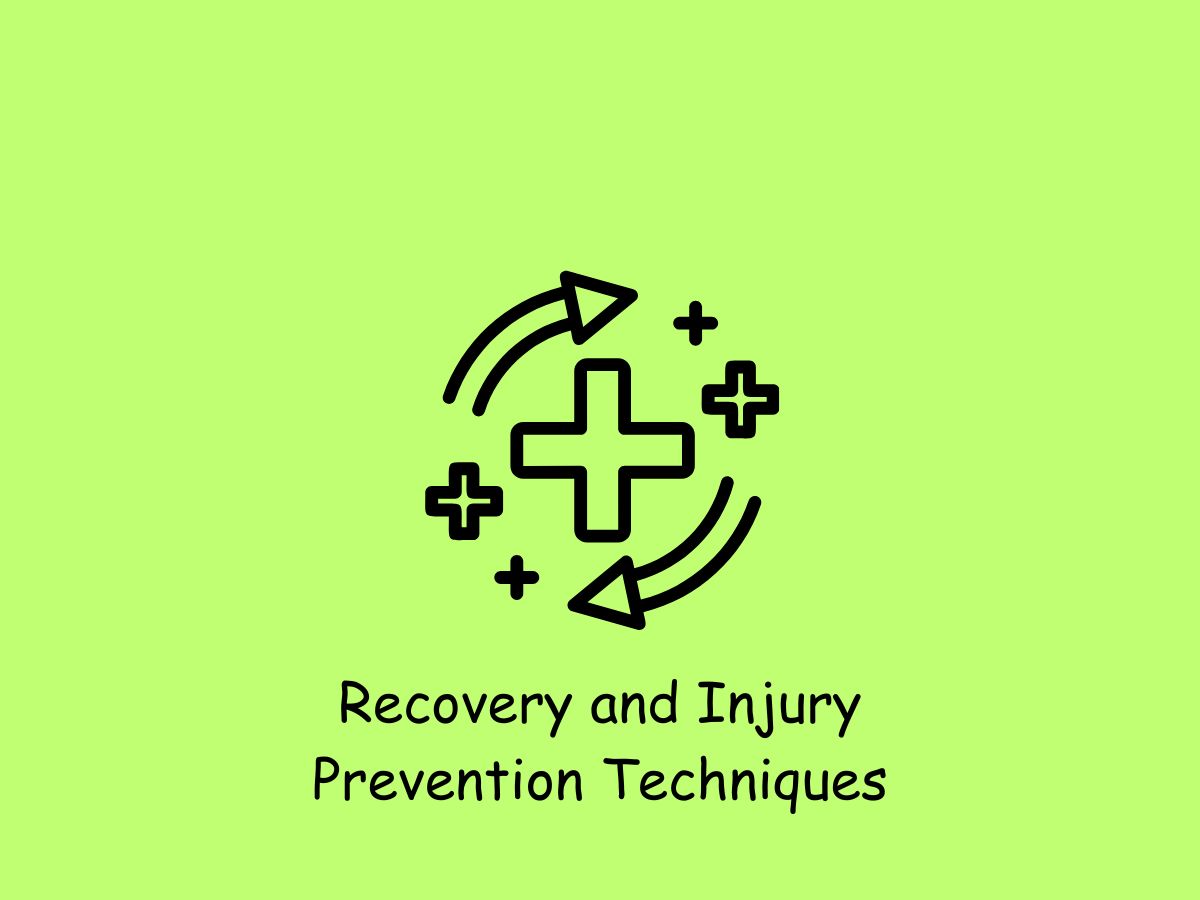
Recovery and injury prevention are crucial for tennis players who want to stay healthy and perform their best. One key technique is to warm up properly before playing. This includes light aerobic exercises and dynamic stretching to prepare your body for the game. After playing, it’s important to cool down with static stretches to help your muscles relax1.
Strength training is another important part of injury prevention. By building strong muscles, especially in your legs, core, and upper body, you can better support your joints during play. This can help prevent common tennis injuries like tennis elbow or knee problems. Remember to focus on exercises that mimic tennis movements to make your training more effective1.
Rest and recovery are just as important as training. Make sure to include rest days in your schedule to allow your body to repair and grow stronger. Using techniques like foam rolling, massage, and proper hydration can help your muscles recover faster. It’s also important to listen to your body and avoid overtraining, which can lead to injuries. By taking care of your body both on and off the court, you can stay healthy and improve your game1.
Nutrition for Tennis Athletes
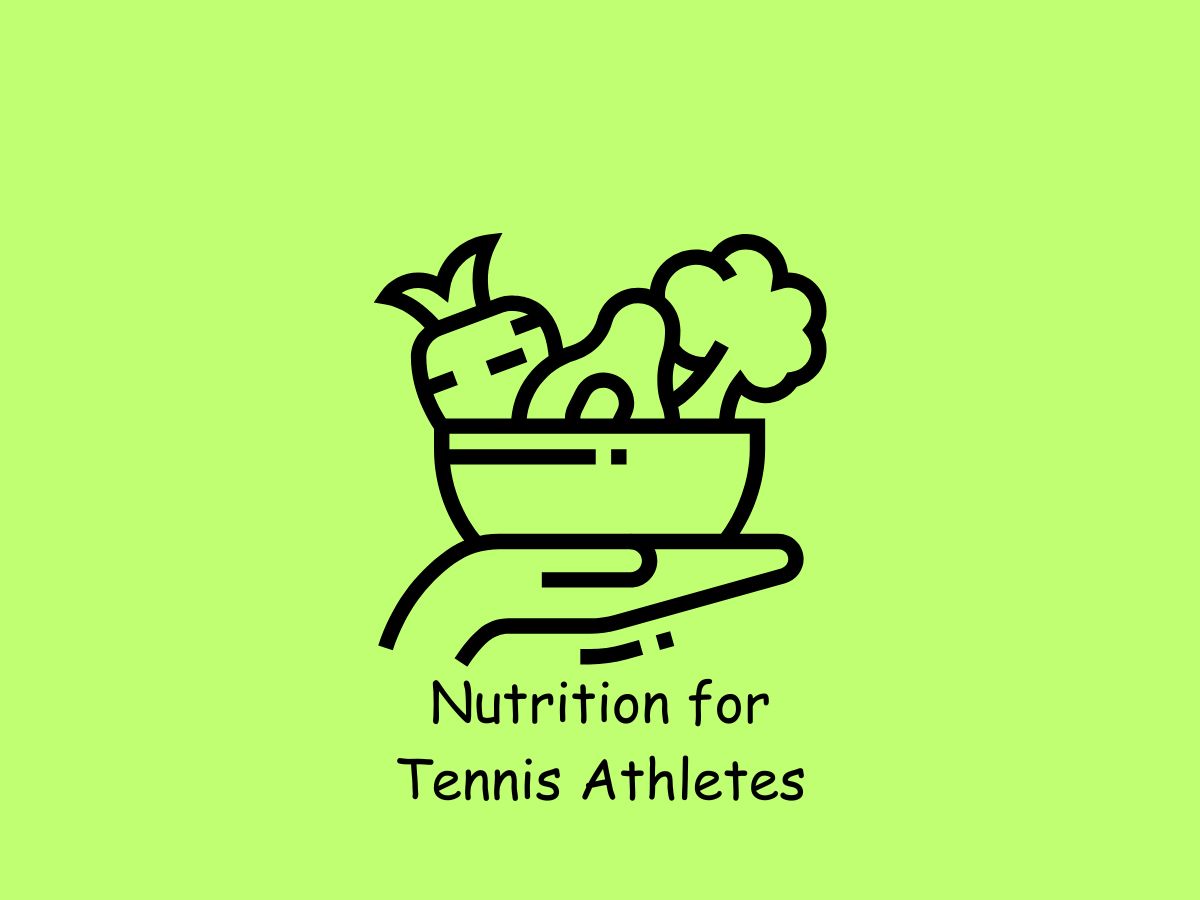
Proper nutrition is essential for tennis players to perform at their best. Carbohydrates are the main fuel source for tennis, so it’s important to eat plenty of them. Tennis players should aim for 6-10 grams of carbs per kilogram of body weight each day. This helps ensure you have enough energy for long matches and intense training sessions2.
Protein is also crucial for tennis players. It helps repair and build muscles after tough workouts or matches. Aim for about 1.6 grams of protein per kilogram of body weight daily. Good sources include lean meats, fish, beans, and low-fat dairy. You can also use protein shakes for a quick and easy boost2.
Don’t forget about staying hydrated. Tennis players should drink plenty of water before, during, and after playing. In hot weather, you might need to drink even more. Sports drinks can be helpful during long matches to replace electrolytes lost through sweat. Remember, good nutrition isn’t just about what you eat on game day. It’s about maintaining a balanced diet all the time to support your training and recovery25.
Creating Your Personalized Tennis Fitness Plan
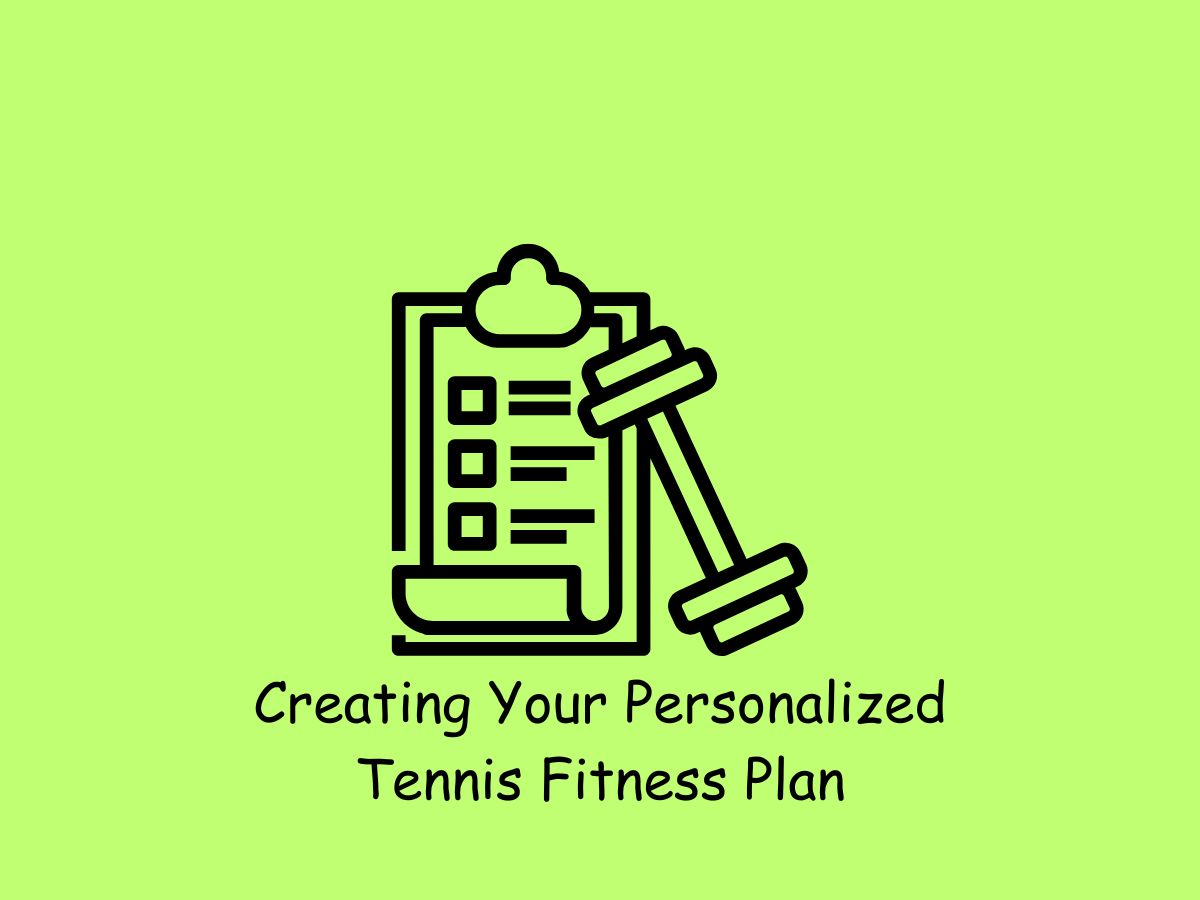
Creating a personalized tennis fitness plan starts with understanding where you are now. Take some time to assess your current skills, fitness level, and areas that need improvement. This could include your serving power, speed on the court, or endurance during long matches. Be honest with yourself about your strengths and weaknesses3.
Next, set clear goals for what you want to achieve. Do you want to improve your serve speed? Increase your endurance? Or maybe you’re recovering from an injury and need to focus on strength building. Whatever your goals, make sure they’re specific and realistic. This will help you stay motivated and track your progress3.
Once you have your goals, it’s time to create your plan. Aim for at least 2-3 tennis practice sessions per week, along with 2-3 fitness workouts. Your fitness workouts should include exercises that target the specific areas you want to improve. This might include strength training, cardio exercises, or flexibility work. Remember to include rest days in your plan to allow for recovery. As you progress, don’t be afraid to adjust your plan. What works for you now might need to change as you improve or as your goals shift3.
Conclusion
You now have some tools to help boost your tennis game. It’s time to put these strategies into action! Start small, be consistent, and watch as your hard work pays off on the court. Remember, progress takes time, so be patient with yourself and enjoy the journey.
By focusing on these key areas of physical conditioning, you’re setting yourself up for success in tennis. So go out there, put in the effort, and start seeing the results. You have everything you need to take your game to the next level.
If you have any questions or need more help with your tennis fitness journey, don’t hesitate to reach out. You can contact me at jaiden@jaidensmedia.com, and I’ll be happy to assist you. Now, get out there and play your best tennis!
FAQs
Why is fitness so important in tennis?
Fitness helps you stay focused, prevents injuries, and gives you the energy to make smart decisions during long matches.
What kind of strength training is best for tennis players?
Focus on exercises that target your legs, core, and upper body. Squats, push-ups, and resistance band rotations are all great choices.
How can I improve my cardiovascular fitness for tennis?
Try running and sprinting intervals. Sprint for 30 seconds, then walk for 90 seconds, and repeat for 10-15 minutes.
Why are flexibility and mobility important in tennis?
They help you move freely on the court, reduce your risk of injury, and improve your performance by allowing you to reach more shots.
What can I do to improve my speed and agility for tennis?
Focus on explosive movements, agility drills, and exercises that improve your reaction time.
Why is core strength so important for tennis performance?
A strong core helps you transfer energy, maintain balance, and prevent injuries during quick movements.
How can I prevent injuries while playing tennis?
Warm-up, cool down, strength train, and get enough rest. Listen to your body and avoid overtraining.
What should I eat to fuel my tennis performance?
Eat plenty of carbohydrates for energy and protein to repair muscles. Stay hydrated with water and sports drinks.
How do I create a personalized tennis fitness plan?
Assess your current skills, set clear goals, and create a workout plan that includes tennis practice and fitness exercises.
How often should I practice tennis and workout each week?
Aim for at least 2-3 tennis practice sessions and 2-3 fitness workouts per week, with rest days in between.
